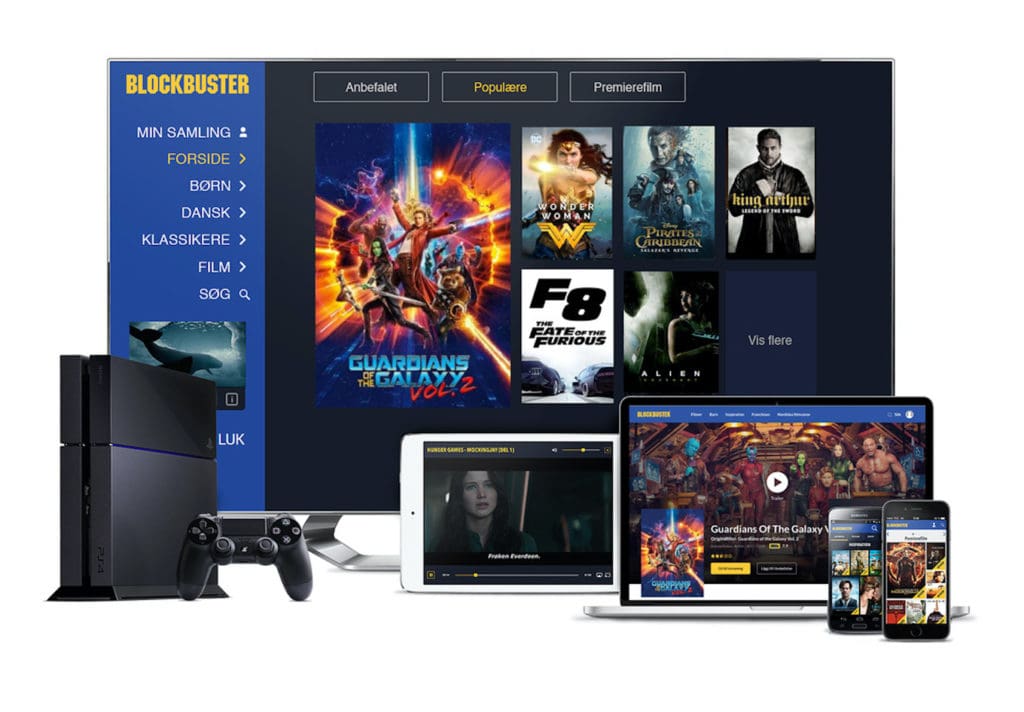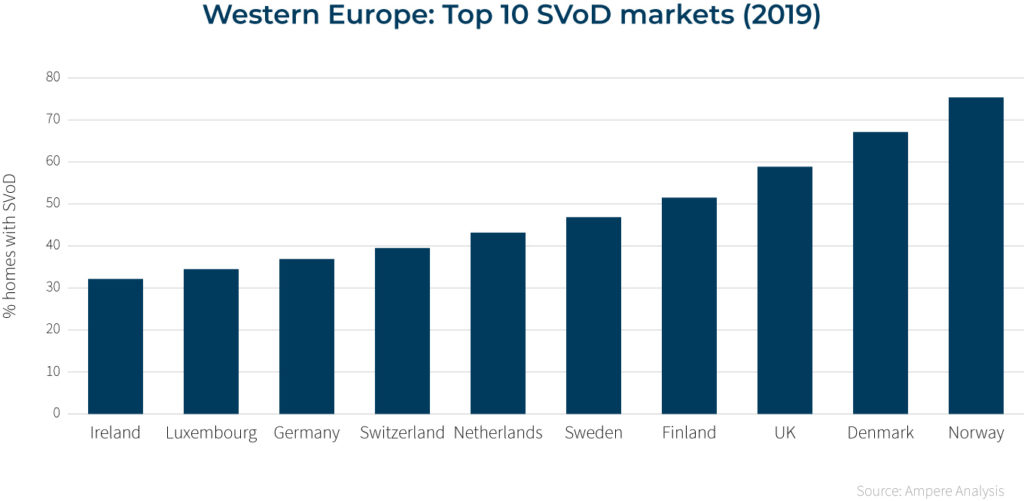As more and more of the world’s services head online, businesses established before the internet era will, sooner or later, have to adapt their business model to survive. This article will look at what the rise, fall, and rise of Blockbuster can teach us about business and the future of movie consumption.
In the 1990s Blockbuster enjoyed a huge international expansion, changing the way the world rented movies, and becoming a household name. However, following the rise of the streaming era, the fall of the old Blockbuster is well documented. The closure of the video rental giant’s 9,000 physical locations around the world is evidence of a simple business maxim: if you don’t adapt, you won’t survive.
The Blockbuster Renaissance: From Stores to Streaming
TDC’s Blockbuster is enjoying strong growth in the Nordics.
But Blockbuster is far from dead. In January 2014 the largest telecommunications company in Denmark, TDC Group, acquired the Blockbuster brand and has since developed an EST and T-VOD service in Denmark, Sweden, Norway, and Finland. The result? Blockbuster is now Denmark’s largest online movie service with over 10,000 titles available to buy or rent.
Thanks to content deals with major international and local studios like The Walt Disney Company, Warner Bros, Paramount Pictures, NBC Universal, 20th Century Fox, Sony Pictures, SF Studios, and Nordisk Film, Blockbuster claims the first availability of access for content immediately after the theatrical release window, a key differentiator to other OTT services, and an important driver of its popularity. So, what happened to Blockbuster? Assessing the brand’s journey from giant to bankruptcy to rising star can provide unique insights both into how the video on demand market is developing, and, more widely, how analyzing, adapting, and innovating can set a business up for success.
The Nordics: Fertile Ground for OTTs
The success of the new Blockbuster is based on sound market analysis and strategic planning. Thanks in part to widespread high speed internet and a swift uptake of new technologies, Nordic consumers are a perfect fit for a new OTT service. According to a 2018 study by Norway’s national statistics institute, 37% of the population between the ages of 9 and 79 watch online Video Media on an average day, up from 10% in 2000. Compare that to a recorded 60% who watch traditional TV per day in 2018, down from 82% in 2000, and the picture you get is a population rapidly trending towards online consumption.
For example, Ampere Analysis ranked Norway as the top consumers of VOD content in Western Europe for 2019:
Norway leads the field in Western Europe’s SVOD market.
Added to that, when Blockbuster decided to roll out from Denmark further into the Nordics, TDC’s market research showed that only 31% of Norwegians felt they were getting enough out of their subscription-based service, and that in Finland only 4% considered themselves very satisfied with their VOD service. Since their launch in Sweden, Finland, and Norway, 950,000 people have registered.
Joining the dots, although Blockbuster was no longer able to exist as traditional DVD rental bricks and mortar stores, it had the perfect opportunity to find its place as a streaming service in the Nordics.
The Enduring Power of Pay-Per-View
Another factor of Blockbuster’s Nordic success story is the maintenance of its legacy identity as a Pay Per View service, despite its move from physical shops to an online service. In this way, TDC turns the market understanding of Blockbuster as a pay per view service into an advantage – as there is no subscription charge, users can pay as they go – while keeping it separate from TDC’s SVOD offering carried by the TV-operator brand, YouSee.
By separating these two services entirely, TDC benefits from both delivery methods while avoiding customer confusion over what is included in a subscription and what is paid for in separate transactions – a key concern for hybrid offerings.
Blockbuster Analytics for Blockbuster Content
Irrespective of industry, when you launch into a new venture, new market, or business model, the ability to measure performance and adapt your service accordingly is critical to continued success. In the VOD industry, this need is only amplified. As different services bid to win and maintain their place in a user’s viewing habits, the ability to track what content is driving users to their service, what is the most popular content, and how the end user is experiencing that content is crucial. It is everything they need to know to ensure their user base is happy, and more likely to return again and again.
For more details about how Blockbuster and TDC are measuring how their viewers are using, experiencing, and valuing their service in real time, read our Case Study: How to analyze your streaming service from the outside in.



